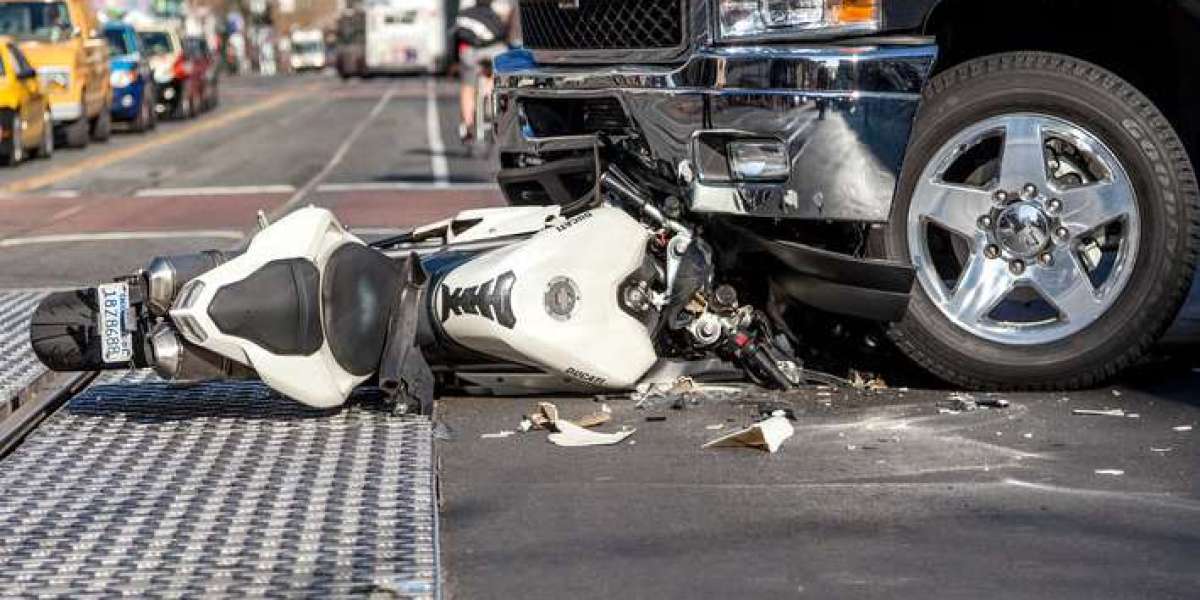Riding a motorcycle offers a thrilling sense of freedom, but also demands heightened awareness of factors that don’t affect car drivers as dramatically. One of the most overlooked and underestimated hazards for motorcyclists is wind. Whether it’s a sudden gust or a steady crosswind, wind can seriously impact motorcycle handling and, more importantly, rider safety.
In this post, we’ll explore how wind affects motorcycle handling, how riders can minimize the risk of collisions, and what others on the road, especially drivers overtaking a motorcyclist, can do to help keep everyone safe.
Understanding the Effect of Wind on Motorcycle Handling
Motorcycles are lighter and smaller than cars, making them much more vulnerable to external forces like wind. Even experienced riders can struggle to maintain control when conditions are windy. Here’s how wind affects motorcycle handling:
1. Crosswinds
Crosswinds—wind that blows from the side—can push a motorcycle off its intended path. This might cause a rider to veer into another lane or drift toward the edge of the road. The danger increases when riders are near large vehicles or structures that create wind tunnels or sudden gusts.
2. Headwinds and Tailwinds
Headwinds push against the motorcycle, reducing speed and increasing fuel consumption.
Tailwinds push from behind, which might seem helpful, but they can reduce braking effectiveness and affect balance.
Both types of wind change the feel of the motorcycle and can lead to overcorrection if the rider isn’t careful.
3. Wind Gusts from Passing Vehicles
Large trucks and SUVs create wind disturbances when they pass a motorcyclist or when a motorcyclist passes them. These quick, unpredictable gusts can momentarily unbalance a rider, especially if they are already dealing with a windy environment.
How Riders Can Reduce Collision Risk in Windy Conditions
Motorcyclists can’t control the weather, but they can control how they respond to it. Here are practical steps every rider should take to stay safer in windy conditions:
1. Stay Loose, Not Rigid
When the wind hits, a common reaction is to tense up and grip the handlebars tightly. This can make handling worse. Instead, riders should keep a firm grip but maintain relaxed arms and shoulders. This allows the bike to move with the wind without oversteering.
2. Use Your Body as a Sail
In high winds, riders can lean slightly into the wind to counterbalance the force pushing against them. This body positioning helps keep the bike on its path without relying solely on steering.
3. Adjust Speed and Lane Position
Slowing down gives riders more control and time to react. Positioning the motorcycle in the lane to give extra space from vehicles, curbs, or guardrails is another way to stay safe. This is especially important when overtaking a motorcyclist or being overtaken.
4. Be Extra Alert in Windy Zones
Some areas are known for strong or sudden winds—bridges, open highways, tunnels, and mountain roads, for example. If you know a gusty area is coming up, it’s wise to prepare ahead by adjusting speed and grip.
5. Dress for the Wind
Proper gear helps with aerodynamics. Loose clothing can catch the wind like a parachute, making it harder to stay stable. A streamlined helmet, fitted jacket, and snug gloves reduce wind resistance and improve control.
What Drivers Should Know When Overtaking a Motorcyclist in Windy Conditions
Wind affects more than just motorcyclists—it also affects how vehicles interact with motorcycles. One key risk factor is when drivers are overtaking a motorcyclist during windy conditions.
Here’s what all drivers need to remember:
1. Give Extra Space
Don’t pass closely. Motorcycles may swerve slightly due to wind, and close proximity can increase the risk of sideswipe accidents. Move fully into the next lane, just like you would if you were passing another car.
2. Avoid Sudden Movements
Wind alone can surprise a motorcyclist. When paired with sudden lane changes, acceleration, or braking by nearby vehicles, it becomes even more dangerous. Maintain a consistent speed and avoid cutting back in too soon after passing.
3. Understand Wind Tunnels
Large vehicles create wind turbulence. When a truck or SUV overtakes a motorcycle, the wind it displaces can buffet the rider. Conversely, when a motorcyclist overtakes a large vehicle, they should be prepared for the same. Drivers should be patient and not speed up mid-pass.
4. Use Your Mirrors and Signals
Before overtaking a motorcyclist, check your mirrors and blind spots carefully. Motorcycles can appear farther away than they are. Always signal well in advance so the rider can anticipate your move.
The Role of Road Design and Environment
Certain roads are windier than others. Open highways, mountain passes, and coastal routes tend to experience strong winds. Unfortunately, many of these are popular riding spots. Here’s how the environment contributes to risk:
Bridges: Wind tends to be stronger and less predictable on bridges. The absence of roadside barriers allows wind to move freely.
Mountain Roads: Gusts can funnel through valleys or ridges.
High-Speed Freeways: More vehicle traffic and speed means wind disturbances from other vehicles have a greater impact.
When possible, riders should avoid high-risk roads during wind advisories, and drivers should be cautious when overtaking a motorcyclist in these areas.
Preparing for Wind: Safety Tips Before the Ride
The best protection against wind is preparation. Before heading out, riders should:
1. Check the Weather Forecast
Wind speed and direction are often listed along with temperature and precipitation. Avoid riding during wind advisories or in areas expecting high gusts.
2. Inspect Your Motorcycle
A well-maintained motorcycle is easier to control. Check tire pressure, alignment, suspension, and brakes before any ride.
3. Travel Light
Heavy saddlebags or top boxes can shift the bike’s balance in the wind. If luggage is necessary, secure it tightly and center the weight as much as possible.
4. Ride with a Group (If Possible)
Group riding helps increase visibility to other drivers and provides additional safety in case of emergencies. Staggered formation riding also helps maintain proper spacing.
Real-World Scenarios: When Wind Becomes Dangerous
Let’s look at a few common situations that demonstrate how dangerous wind can be for motorcyclists—and how awareness and action can reduce the risk:
Scenario 1: Crosswind on a Bridge
A rider approaches a bridge with 30 mph crosswinds. A truck begins overtaking the motorcyclist. The wind hits both the motorcycle and the airflow from the truck, pushing the rider closer to the bridge’s edge.
What should happen?
The rider slows down slightly and leans into the wind.
The truck gives a full lane of space while passing.
Both parties are aware and proceed cautiously.
Scenario 2: Passing a Semi on a Gusty Highway
A motorcyclist tries to pass a semi-truck. Mid-pass, a gust of wind hits. The rider sways toward the truck and nearly loses control.
Safer alternative:
The rider waits until the road is less windy.
Choose a longer stretch with clear visibility.
The truck maintains speed and avoids any sudden moves.
Scenario 3: Urban Street with High Winds
An SUV overtakes a motorcyclist in a downtown area. Buildings create random wind tunnels. The motorcycle jerks slightly toward the curb just as the SUV finishes passing.
Lesson here:
Urban winds are unpredictable.
Cars should avoid overtaking unless safe.
Riders should stay centered and prepared for rapid changes.
Final Thoughts
Wind is an invisible but powerful force on the road—and for motorcyclists, it can mean the difference between a smooth ride and a dangerous situation. By understanding how wind affects motorcycle handling, riders can better prepare and stay in control. At the same time, drivers must be aware of how their actions, especially when overtaking a motorcyclist, can contribute to or prevent accidents.
It’s not just about rules of the road—it’s about respect, patience, and shared responsibility. Together, we can reduce collision risks and make the roads safer for everyone, no matter how many wheels they ride on.
FAQs
1. How do I know if it’s too windy to ride my motorcycle?
If wind speeds are above 30 mph, especially with gusts, it’s often safer to postpone your ride. Bridges, highways, and open rural roads become especially dangerous. Always check the local forecast before heading out.
2. What should I do if I get caught in strong winds while riding?
Stay calm, reduce your speed, and keep a relaxed grip on the handlebars. Lean slightly into the wind and adjust your lane position to maintain a safe buffer from other vehicles. If conditions worsen, consider pulling over safely until the wind subsides.
3. What is the safest way for a car to overtake a motorcyclist in the wind?
Signal early, pass with a full lane of clearance, and maintain a steady speed. Avoid overtaking on bridges or in known windy areas, and never cut back in abruptly. Respect the space a motorcycle needs to adjust to wind.


